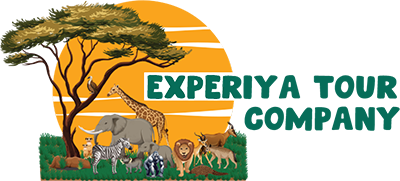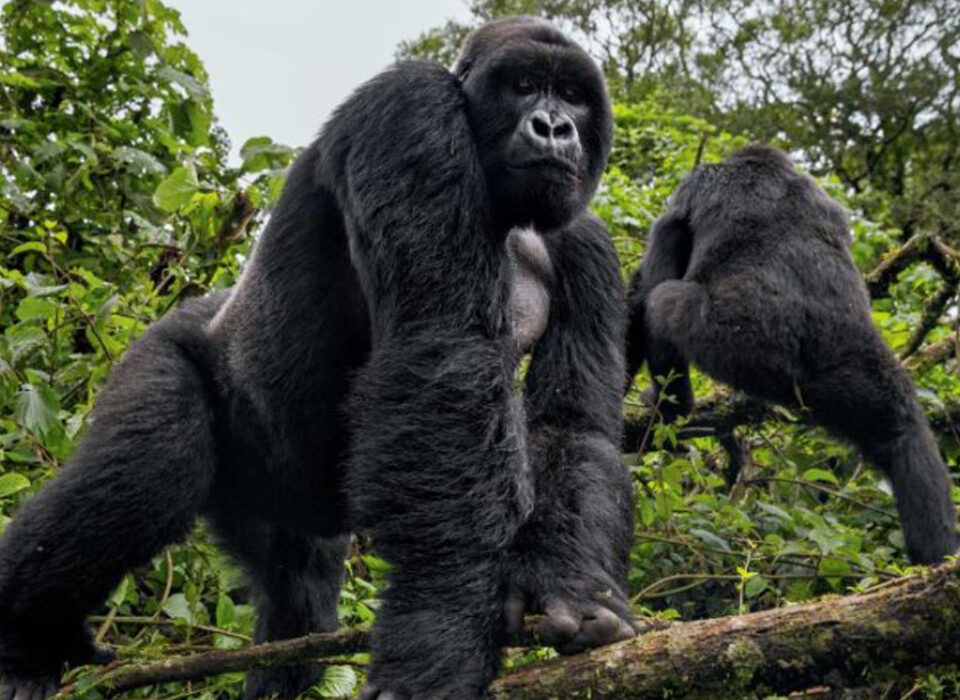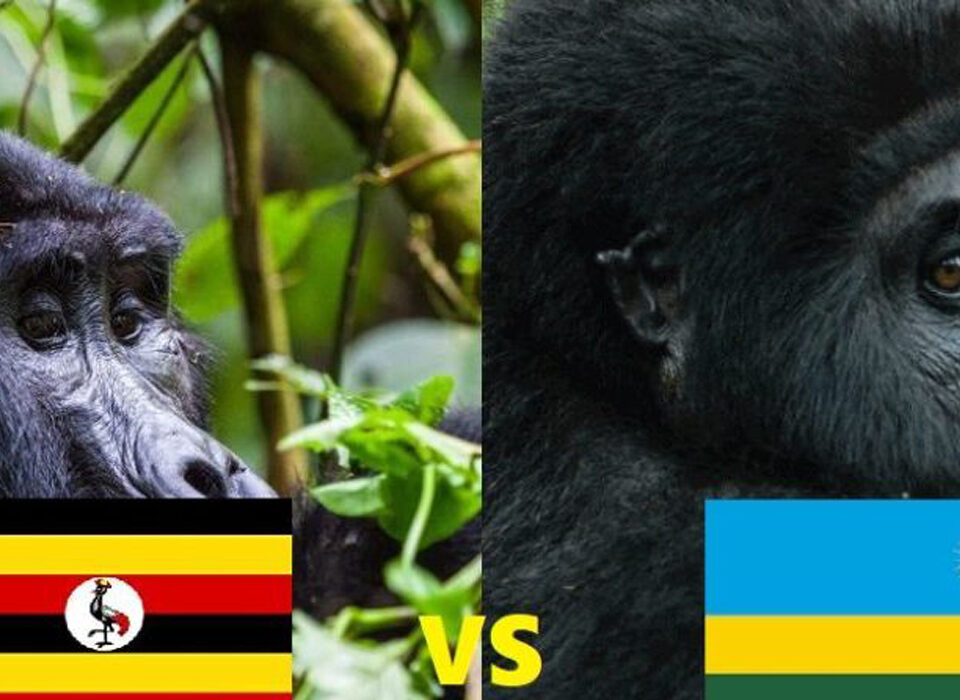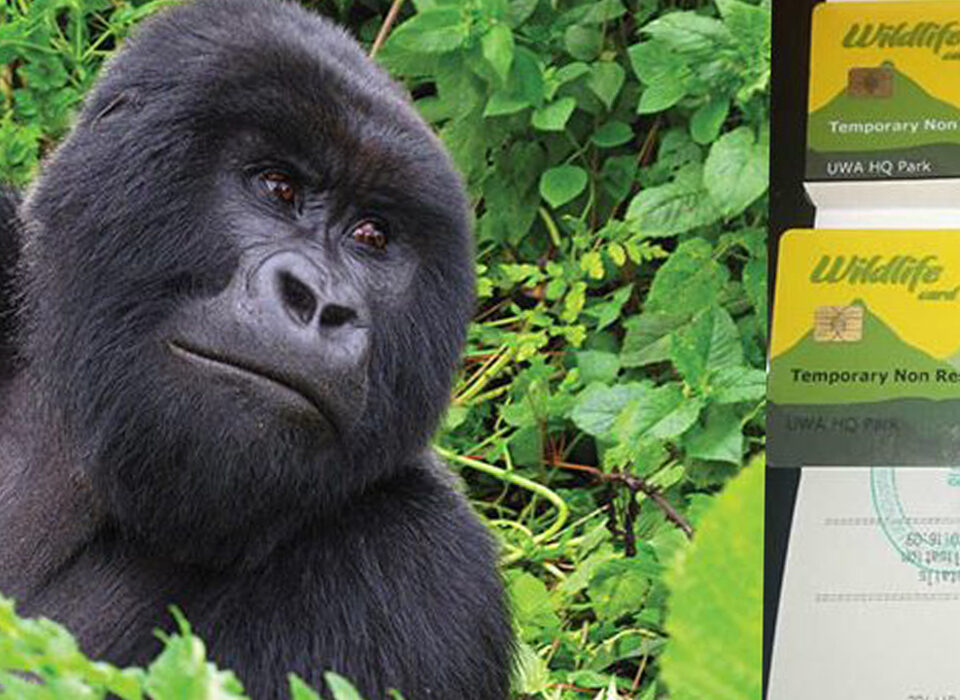- GET IN TOUCH WITH US:
- +256 753518160
- +256 777842166
- info@experiyatourcompany.com

Chimpanzee Tracking in Kibale vs Ngamba Island
October 9, 2025
How to Book a Domestic Flight in Uganda
October 9, 202515 Unusual Primate Species Found in Uganda
Uganda is often called the primate capital of the world, boasting 20 species—13 diurnal (day-active) and seven nocturnal. These intelligent and fascinating creatures thrive in the country’s lush tropical forests, giving Uganda the highest concentration of primates in Africa.
The list includes world-famous species like mountain gorillas and chimpanzees, along with lesser-known wonders such as the dwarf galago. Most belong to the Old World Monkey family—featuring golden monkeys, De Brazza’s, black-and-white colobus, red colobus, pottos, bushbabies, grey-cheeked mangabeys, L’Hoest’s, red-tailed monkeys, vervets, patas, and baboons.
Uganda offers more profound and authentic encounters with primates than any other African destination. Guided treks into untamed forests bring travelers face-to-face with these creatures in their natural habitats, revealing their unique behaviors, intricate social lives, and uncanny similarities to humans.
The best places for primate experiences include Bwindi Impenetrable National Park (for gorillas) and Kibale National Park (for chimpanzees). Other great spots include Budongo Forest, Kyambura Gorge, and Semuliki National Park—each offering incredible encounters for primate lovers and adventure seekers.
15 Incredible Primate Species Found in Uganda
1. Mountain Gorilla
The mighty mountain gorilla is one of the great apes—alongside chimpanzees, bonobos, orangutans, and humans. They live only in Uganda, Rwanda, and the DRC, and each has a unique nose print like a human fingerprint. These gentle giants live in family groups led by a dominant silverback male. Trekking through the misty jungles of Bwindi Impenetrable National Park gives you a chance to witness their tender and powerful nature up close.
2. Chimpanzee
Our closest cousin, the chimpanzee, shares about 98.7% of human DNA. It’s one of the most studied primates and has significantly contributed to human medicine and psychology. In Uganda, you can track these intelligent apes in Kibale, Budongo, Kalinzu, Kyambura Gorge, and Semuliki forests, observing their playful energy and complex communication.
3. Golden Monkey
The golden monkey is an endangered Old World Monkey found only in the bamboo forests of the Virunga Volcanoes. Its bright golden-orange coat and cute face make it one of the most striking primates on Earth. Trekking for golden monkeys in Mgahinga Gorilla National Park is a truly unique experience found nowhere else in the world.
4. Blue Monkey
Closely related to the golden monkey, the blue monkey is more widespread, thriving in most Ugandan forests except Murchison Falls and Lake Mburo. It’s easily recognized by its bluish-grey fur and curious eyes.
5. De Brazza’s Monkey
The De Brazza’s monkey is famous for its white beard, reddish-brown brow, and striking blue scrotum. Often called the “gentleman monkey,” it inhabits Semuliki National Park and Mount Elgon National Park, where its dignified look stands out among forest dwellers.
6. Black-and-White Colobus Monkey
Elegant and charismatic, the black-and-white colobus lacks thumbs—yet moves gracefully through the treetops. Its long, flowing white mantle and bushy tail make it one of the most photogenic monkeys in Uganda. It’s commonly seen in Kibale, Bwindi, and riparian woodlands.
7. Red Colobus
The red colobus is a stunning primate with brick-red, grey, and white fur and large expressive eyes. Closely related to the black-and-white colobus, it’s often spotted in Kibale Forest and occasionally in Semuliki National Park.
8. Potto
The potto—also known as the “bush bear” or “softly-softly”—is a slow-moving nocturnal primate found in Kibale Forest. Its large, reflective eyes glow in the dark during night walks, offering a rare and charming encounter.
9. Bush Baby (Galago)
The bush baby earned its name from its cry that sounds like a baby’s wail. With enormous eyes and radar-like ears, it’s an adorable nocturnal creature that leaps through the forest canopy. You can spot it during night walks in Kibale and Queen Elizabeth National Park.
10. Grey-Cheeked Mangabey
The grey-cheeked mangabey resembles a small baboon with a shaggy coat and golden mane around the neck. Known for its toothy smile, this charismatic monkey is often seen in Kibale Forest—Uganda’s primate capital.
11. L’Hoest’s Monkey
Recognizable by its striking white bib and dark chestnut coat, L’Hoest’s monkey looks like a tiny jungle reverend. It’s shy and less common but can be found in Kibale, Bwindi, and Maramagambo Forest if you’re lucky.
12. Red-Tailed Monkey
The red-tailed monkey stands out with its heart-shaped white nose patch and fluffy red tail. It stores food in its cheek pouches and enjoys eating later in safety—an ingenious adaptation! They are widespread across Uganda’s forests, from Kibale to Bwindi and Semuliki.
13. Vervet Monkey
The vervet monkey is one of Uganda’s most adaptable primates. Its blue underparts may catch your eye, but its mischief will keep you entertained. Highly social and intelligent, vervets are common in woodlands, towns, and even Entebbe Botanical Gardens.
14. Patas Monkey
The patas monkey is the fastest primate on Earth, sprinting across savannas on its fingertips. With its reddish-gold coat and expressive face, it thrives in Kidepo Valley and Murchison Falls National Parks, living mostly on the ground.
15. Baboon
Baboons are highly social, intelligent, and widespread across Uganda. Male baboons wield canine teeth longer than those of a leopard—used for defense and dominance displays. You’ll encounter them in Queen Elizabeth, Murchison Falls, and Lake Mburo National Parks, often watching tourists as closely as we watch them.
Final Thoughts
Uganda’s extraordinary diversity of primates from the tiny bush baby to the mighty mountain gorilla—makes it a true paradise for wildlife enthusiasts and photographers. Whether trekking deep into rainforests or enjoying nocturnal walks, each encounter reveals the beauty and intelligence of our closest relatives.
For a well-crafted itinerary that combines the best of Uganda’s primate adventures, contact Experiya Tour Company your expert guide to unforgettable encounters with Uganda’s wild and wonderful primates.



